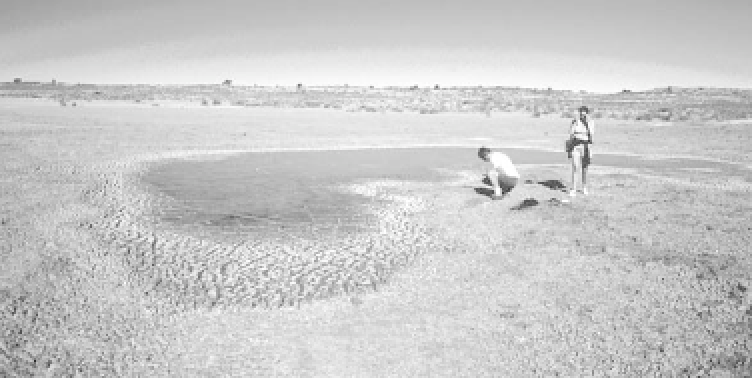Geology Reference
In-Depth Information
Yardangs and
Zeugen
Yardangs
are normally defined as spectacular stream-
lined, sharp and sinuous ridges that extend parallel
to the wind, and are separated by parallel depres-
sions. They are sometimes said to resemble upturned
ships' hulls. Yet the form of yardangs varies. Two size
classes are distinguished - mega-yardangs and yardangs.
Mega-yardangs
, which are over 100 m long and up to
1,000 m wide, are reported only from the central Sahara
and Egypt, some good examples occurring in the Boukou
area near the Tibesti Mountains of Chad.
In the Qaidam Basin, Central Asia, eight forms of
yardang occur: mesas, sawtooth crests, cones, pyramids,
very long ridges, hogbacks, whalebacks, and low stream-
lined whalebacks (Halimov and Fezer 1989). Yardangs
have been reported from Central Asia (the Taklimakan
Desert, China), the Near East (the Lut Desert, south-
eastern Iran; the Khash Desert, Afghanistan; the Sinai
Peninsula; and Saudi Arabia), several localities across
the Saharan region, North America (the Mojave Desert,
California), and South America (the Talara and Paracas-
Ica regions, Peru). The yardangs in the Lut Basin, Iran, are
among the largest on the planet. They stand up to 80 m
tall and are carved out of the Lut Formation, which con-
sists of fine-grained, horizontally bedded, silty clays and
limey gypsum-bearing sands.
Pan
1km
Figure 12.2
A pan in southern Africa.
Source:
Adapted from Grove (1969)
Plate 12.2
Floor of Rooipan, a small pan or deflation hollow in the south-west Kalahari. The pan accumulates limited
rainfall (less than 150 mm per annum in this area) in the wet season, but receives additional moisture by groundwater
seepage.
(
Photograph by Dave Thomas
)









